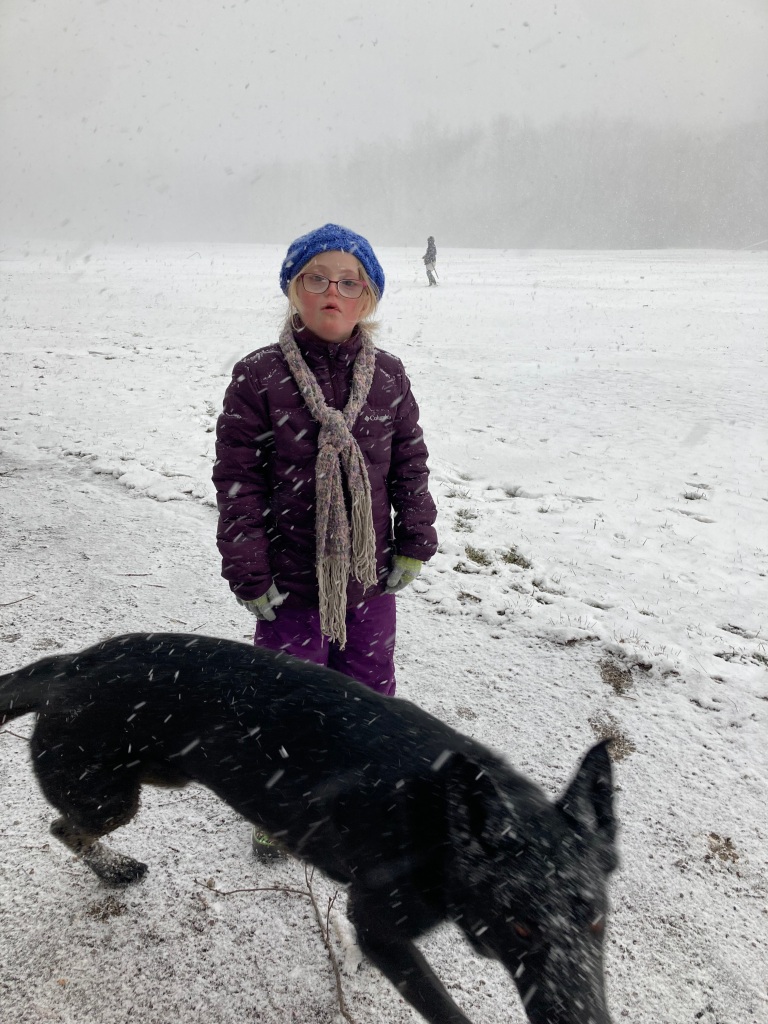Like a lot of children, my 9-year-old daughter, Lyra, relies on routine to make life predictable and easier for us both. Conversely, changes in her routines can understandably take a minute.
When I tell Lyra on the first warm spring morning that she needn’t put on a hat, scarf and mittens when getting ready for her school bus, she does anyway. I chalk it into the “pick your battles” category and she heads out overly dressed the first weeks of the season.
Knowing this, I was surprised last Monday when I told Lyra she no longer needed to wear a mask to school. She made no attempt to grab a fresh one from the basket where I’ve stored them for nearly two years.
Last August I wrote a column supporting Akron Public Schools’ decision to mandate masks when the buildings reopened for the 2021-2022 school year. At the time, COVID’s delta variant was engulfing Summit County where many of the school districts that initially did not require masks soon returned to remote learning due to significant outbreaks.
In spite of my family’s best efforts to support Lyra’s remote learning during the full year APS’ buildings remained closed, her education stalled. Thus, my biggest fear this school year was a return, even temporarily, to online instruction.
Now, seven months later, we must ask: Do the risks of contracting COVID (including hospitalization and death) remain greater than the educational risks associated with remaining masked? When can we reasonably, as we eventually must, choose to end mask mandates?
One of the courses I teach this semester at the University of Akron is rhetoric. I tell my second-semester freshmen in this course that it is like a microcosm of college in which they will develop critical thinking skills. They learn how to find reliable data from credible sources, which they must read more closely than they are used to in order to analyze the effectiveness of each piece’s arguments.
Rhetoric students also come to recognize fallacious arguments such as a red herring (Before allowing ice fishing shanties, we must first consider if they’ll increase prostitution) or an ad hominem (While Michael Cohen’s testimony to the Senate was impossible to disprove, we shouldn’t listen to him because he’s a confessed slime-ball).
Whenever I teach this course, I assign articles on current events for rhetorical analysis. Last month, my students read multiple op-eds and one New York Times newsletter on when school mask mandates should end.
The difficulty in determining a specific date to end mask mandates, which must take into account many variables that change daily, was ideal precisely because there is no one-date-is-perfect-everywhere solution.
Here’s what we learned: Each new variant of a virus quickly supplants the previous one and typically successive generations of any virus are more transmissible but also less harmful than earlier ones. Which is to say, we are quickly getting to the same territory with COVID as the annual flu.
Furthermore, there is evidence that masks impede education. Of course they do. The decibels at which I lecture from behind a mask are just shy of screaming. Beyond making instruction difficult, masks also hinder social connectivity. Younger students are reportedly taking months instead of the usual weeks to make new friends when masked.
Politically, at least two extreme camps exist on masking. One is the camp that believes all masking was always pointless. The other holds that we should wear masks until the risk of contracting COVID is zero. As with most binary approaches, both are overly simplistic.
Now that children ages 5 and up can be vaccinated, now that the omicron contraction rate has peaked and, as with previous variants, dramatically fallen and given that future variants will most likely continue to be milder than those that have come before, it is time to end mandatory masking where it makes sense.
Hospitals and medical offices will understandably continue requiring masks longer than stores and schools do because people who are medically compromised or fragile are more likely to be in medical facilities.
Last summer, after vaccines were available and COVID rates subsequently dropped, many believed we were done with masking. Then the delta variant debuted in America. That’s when I pitched our cloth masks for disposables, mostly for the sake of ease, but also because they had proved to be more effective.
I heartily pray this spring is the real end of the pandemic as we’ve known it for the past two years.
Akron Public Schools surveyed its families in the weeks before revisiting the district’s mask mandate. As a parent of a child in the district, I took the survey and answered yes, it is time to make masks optional in our city’s schools.
This was first published in the Akron Beacon Journal on March 20, 2022.

